Optimal Allocation of Shared Energy Storage in Low-Carbon Parks Taking into Account the Uncertainty of Photovoltaic Output and Electric Vehicle Charging
Abstract
1. Introduction
- (1)
- A shared energy storage configuration model is developed that incorporates carbon emission reduction benefits via the China Certified Emission Reduction (CCER) market mechanism, offering a policy-aligned pathway for low-carbon park operations.
- (2)
- A two-stage robust optimization model is proposed to address the dual uncertainties of PV output and EV charging demand and is solved using a column-and-constraint generation (C&CG) algorithm to ensure solution feasibility and robustness.
- (3)
- LHS and K-means clustering are employed to generate representative PV output scenarios, while an EV charging model combined with Monte Carlo Sampling (MCS) is used to construct load demand scenarios, ensuring the accurate and efficient characterization of system uncertainties.
- (4)
- Simulation studies based on a typical industrial park are carried out to verify the effectiveness of the proposed method in improving economic performance and carbon reduction, demonstrating its practical applicability in shared energy storage planning under park-level PV-SESS-CS systems.
2. The Shared Energy Storage Configuration Model of the Park with SESS
2.1. Park Architecture with SESS
2.2. Construction of Shared Energy Storage Configuration Model in Park
2.2.1. Objective Function
- 1.
- Initial investment costs
- 2.
- Operation and maintenance costs
- 3.
- Recycling income
- 4.
- Power purchase cost
- 5.
- Depreciation cost of energy storage life
- 6.
- Carbon emission reduction benefits
2.2.2. Constraints
- 1.
- Energy storage power station
- 2.
- PV output
- 3.
- User load
3. Two-Stage Robust Optimization Model and Solution Method for Shared Energy Storage Configuration in Park
3.1. A Two-Stage Robust Optimization Model for Shared Energy Storage Configuration in the Park
3.2. The Solution Method of Shared Energy Storage Configuration in the Park
- (1)
- The value of a set of uncertain variables u is given as the initial worst scenario, and the lower bound , the upper bound , and the number of iterations k = 1 corresponding to the final scheduling scheme are set.
- (2)
- The optimal solution is obtained by solving the master problem in Equation (35) according to the worst scenario , where the objective function value of the master problem is taken as a new lower bound ;
- (3)
- Substitute the obtained solution of the MP into the Equation (40), solve the SP, obtain the objective function value of the SP and the corresponding value of the uncertain variable u in the worst scenario, and update the upper bound ;
- (4)
- Given that the convergence threshold of the algorithm is , if , the iteration is stopped and the optimal solutions, and , are returned. Otherwise, increase the variable and the following constraints:
4. Generation of Uncertain Scenarios of EV Charging Load and PV Output
4.1. EV Charging Load Scenario Generation
4.1.1. Charging Uncertainty Scene Generation Method
- (1)
- Input the maximum number of simulations and the total number of electric vehicles, and initialize them.
- (2)
- According to the probability model mentioned above, the charging start time and daily mileage of the owner are randomly generated.
- (3)
- The charging power is calculated by combining the relevant parameters of the electric vehicle, and the charging load is accumulated.
- (4)
- After the calculation of the charging load of all electric vehicles is completed, the next simulation is carried out. After the number of simulations reaches the maximum value, the average value is taken to output the disordered charging load curve of electric vehicles.
4.1.2. Charging Load Fluctuation Curve of EV
4.2. Generation of PV Output Scene in Park
4.2.1. Random Scene Generation Method of PV Output in Park
- (1)
- The initial parameters of the PV system are input, and the sample values of the key variables are generated by LHS. The specific values are calculated using the cumulative probability distribution function, and the sample matrix of K*N is constructed. The initial PV output scene is generated by combining the order matrix and the coefficient matrix.
- (2)
- Set the number of clusters, randomly assign the initial centroid, and assign each scene to the nearest initial centroid corresponding cluster.
- (3)
- Calculate the mean value of the scene in each cluster as the new centroid, reassign all scenes to the cluster corresponding to the new centroid, and repeat the iteration until the centroid position is stable.
- (4)
- Select the scene corresponding to the final centroid of each cluster, and output the representative PV output curve for the optimization analysis of SESS.
4.2.2. PV Output Random Fluctuation Curve
5. Case Analysis
5.1. Parameter Settings
5.2. Analysis of Results
6. Conclusions
Author Contributions
Funding
Data Availability Statement
Conflicts of Interest
References
- Sarda, J.; Patel, N.; Patel, H.; Vaghela, R.; Brahma, B.; Bhoi, A.K.; Barsocchi, P. A Review of the Electric Vehicle Charging Technology, Impact on Grid Integration, Policy Consequences, Challenges and Future Trends. Energy Rep. 2024, 12, 5671–5692. [Google Scholar] [CrossRef]
- Yao, M.; Da, D.; Lu, X.; Wang, Y. A Review of Capacity Allocation and Control Strategies for Electric Vehicle Charging Stations with Integrated Photovoltaic and Energy Storage Systems. World Electr. Veh. J. 2024, 15, 101. [Google Scholar] [CrossRef]
- Yang, M.; Zhang, L.; Zhao, Z.; Wang, L. Comprehensive Benefits Analysis of Electric Vehicle Charging Station Integrated Photovoltaic and Energy Storage. J. Clean. Prod. 2021, 302, 126967. [Google Scholar] [CrossRef]
- Luo, J.; Fan, F.; Tai, N.; Chen, Z.; Pu, C.; Zhang, X. Low-Carbon Economic Optimization for Park Integrated Energy System Considering Multi-Network Integration. In Proceedings of the 2023 IEEE/IAS Industrial and Commercial Power System Asia (I&CPS Asia), Chongqing, China, 7–9 July 2023; pp. 2160–2165. [Google Scholar]
- Zhu, X.; Yang, J.; Pan, X.; Li, G.; Rao, Y. Regional Integrated Energy System Energy Management in an Industrial Park Considering Energy Stepped Utilization. Energy 2020, 201, 117589. [Google Scholar] [CrossRef]
- Alshareef, R.S.; Maghrabie, H.M. Building-Integrated Photovoltaics with Energy Storage Systems—A Comprehensive Review. J. Energy Storage 2025, 116, 115916. [Google Scholar] [CrossRef]
- Chen, C.; Sun, H.; Shen, X.; Guo, Y.; Guo, Q.; Xia, T. Two-Stage Robust Planning-Operation Co-Optimization of Energy Hub Considering Precise Energy Storage Economic Model. Appl. Energy 2019, 252, 113372. [Google Scholar] [CrossRef]
- Zhou, S.; Han, Y.; Mahmoud, K.; Darwish, M.M.F.; Lehtonen, M.; Yang, P.; Zalhaf, A.S. A Novel Unified Planning Model for Distributed Generation and Electric Vehicle Charging Station Considering Multi-Uncertainties and Battery Degradation. Appl. Energy 2023, 348, 121566. [Google Scholar] [CrossRef]
- Liu, Z.; Wu, J.; Cui, S.; Zhu, R. An Energy Collaboration Framework Considering Community Energy Storage and Photovoltaic Charging Station Clusters. J. Energy Storage 2025, 116, 115976. [Google Scholar] [CrossRef]
- Xu, T.; Ren, Y.; Guo, L.; Wang, X.; Liang, L.; Wu, Y. Multi-Objective Robust Optimization of Active Distribution Networks Considering Uncertainties of Photovoltaic. Int. J. Electr. Power Energy Syst. 2021, 133, 107197. [Google Scholar] [CrossRef]
- Yang, N.; Xu, G.; Fei, Z.; Li, Z.; Du, L.; Guerrero, J.M.; Huang, Y.; Yan, J.; Xing, C.; Li, Z. Two-Stage Coordinated Robust Planning of Multi-Energy Ship Microgrids Considering Thermal Inertia and Ship Navigation. IEEE Trans. Smart Grid 2025, 16, 1100–1111. [Google Scholar] [CrossRef]
- Sun, X.; Cao, X.; Zeng, B.; Zhai, Q.; Başar, T.; Guan, X. Stochastic-Robust Planning of Networked Hydrogen-Electrical Microgrids: A Study on Induced Refueling Demand. IEEE Trans. Smart Grid 2025, 16, 115–130. [Google Scholar] [CrossRef]
- Pan, X.; Liu, K.; Wang, J.; Hu, Y.; Zhao, J. Capacity Allocation Method Based on Historical Data-Driven Search Algorithm for Integrated PV and Energy Storage Charging Station. Sustainability 2023, 15, 5480. [Google Scholar] [CrossRef]
- Li, L.; Cao, X.; Zhang, S. Shared Energy Storage System for Prosumers in a Community: Investment Decision, Economic Operation, and Benefits Allocation under a Cost-Effective Way. J. Energy Storage 2022, 50, 104710. [Google Scholar] [CrossRef]
- Tasneem, O.; Tasneem, H.; Xian, X. Lithium-Ion Battery Technologies for Grid-Scale Renewable Energy Storage. Next Res. 2025, 2, 100297. [Google Scholar] [CrossRef]
- Dong, X.-J.; Shen, J.-N.; Liu, C.-W.; Ma, Z.-F.; He, Y.-J. Simultaneous Capacity Configuration and Scheduling Optimization of an Integrated Electrical Vehicle Charging Station with Photovoltaic and Battery Energy Storage System. Energy 2024, 289, 129991. [Google Scholar] [CrossRef]
- Ma, Y.; Xu, W.; Yang, H.; Zhang, D. Two-Stage Stochastic Robust Optimization Model of Microgrid Day-Ahead Dispatching Considering Controllable Air Conditioning Load. Int. J. Electr. Power Energy Syst. 2022, 141, 108174. [Google Scholar] [CrossRef]
- Zhang, M.; Yan, Q.; Guan, Y.; Ni, D.; Agundis Tinajero, G.D. Joint Planning of Residential Electric Vehicle Charging Station Integrated with Photovoltaic and Energy Storage Considering Demand Response and Uncertainties. Energy 2024, 298, 131370. [Google Scholar] [CrossRef]
- Zhao, G.; Yu, C.; Huang, H.; Yu, Y.; Zou, L.; Mo, L. Optimization Scheduling of Hydro–Wind–Solar Multi-Energy Complementary Systems Based on an Improved Enterprise Development Algorithm. Sustainability 2025, 17, 2691. [Google Scholar] [CrossRef]
- Li, J.; Liu, D.; Jiang, S.; Wu, L. Optimal Configuration of Shared Energy Storage System in Microgrid Cluster: Economic Analysis and Planning for Hybrid Self-Built and Leased Modes. J. Energy Storage 2024, 104, 114624. [Google Scholar] [CrossRef]
- National Greenhouse Gas Voluntary Emission Reduction Trading System. Available online: https://www.ccer.com.cn/ (accessed on 10 June 2025).
- Xiao, H.; Long, F.; Zeng, L.; Zhao, W.; Wang, J.; Li, Y. Optimal Scheduling of Regional Integrated Energy System Considering Multiple Uncertainties and Integrated Demand Response. Electr. Power Syst. Res. 2023, 217, 109169. [Google Scholar] [CrossRef]
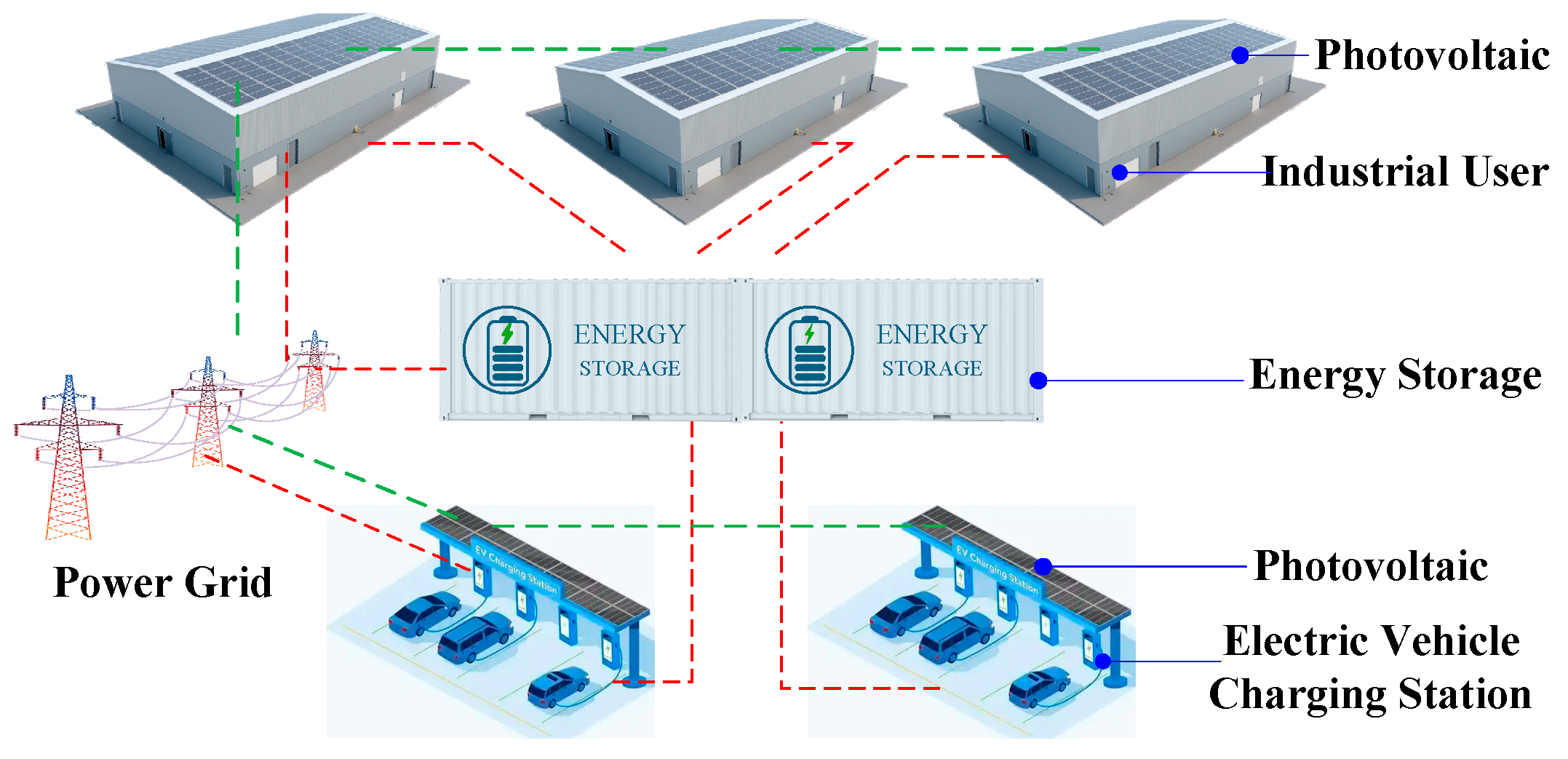
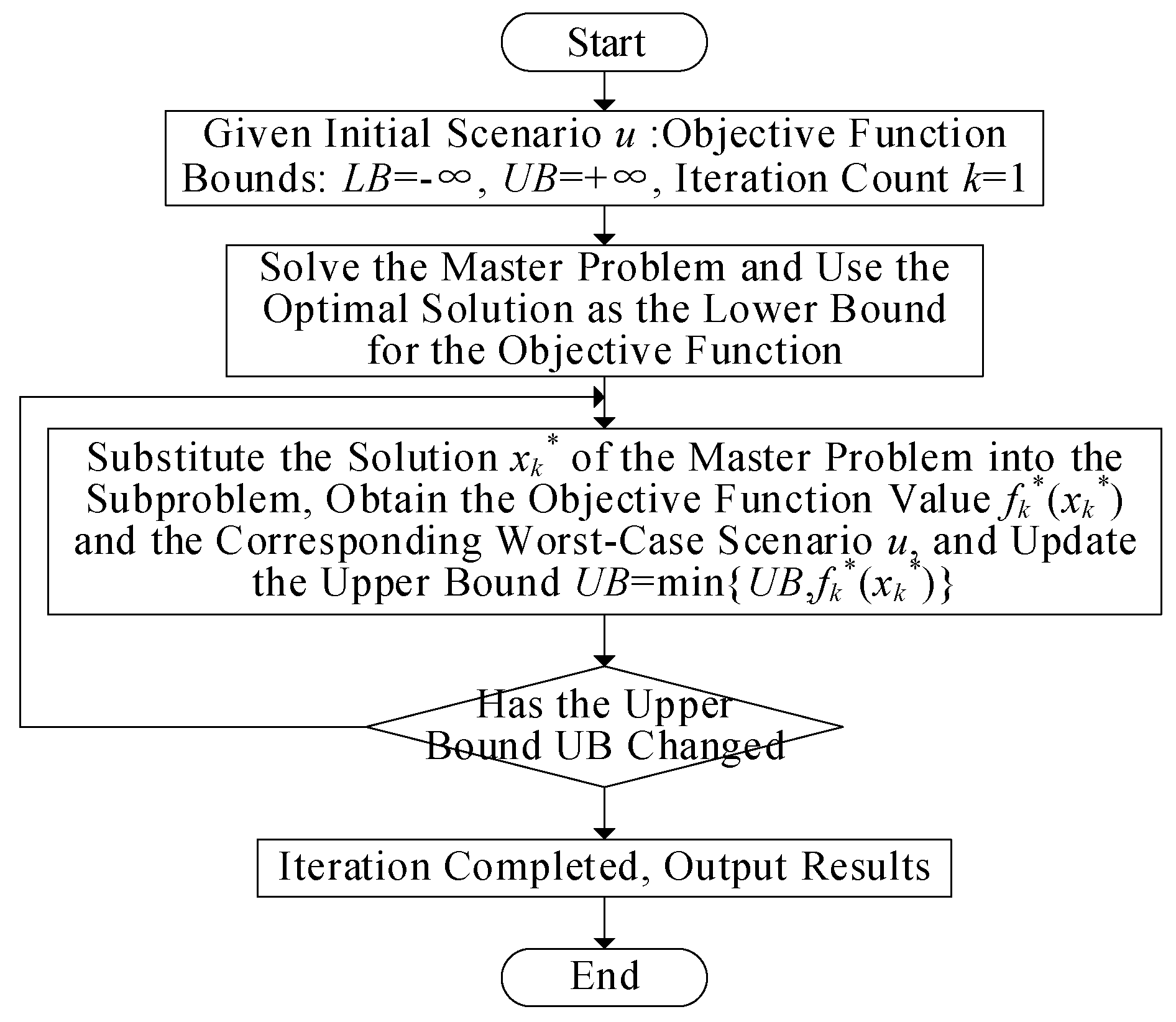
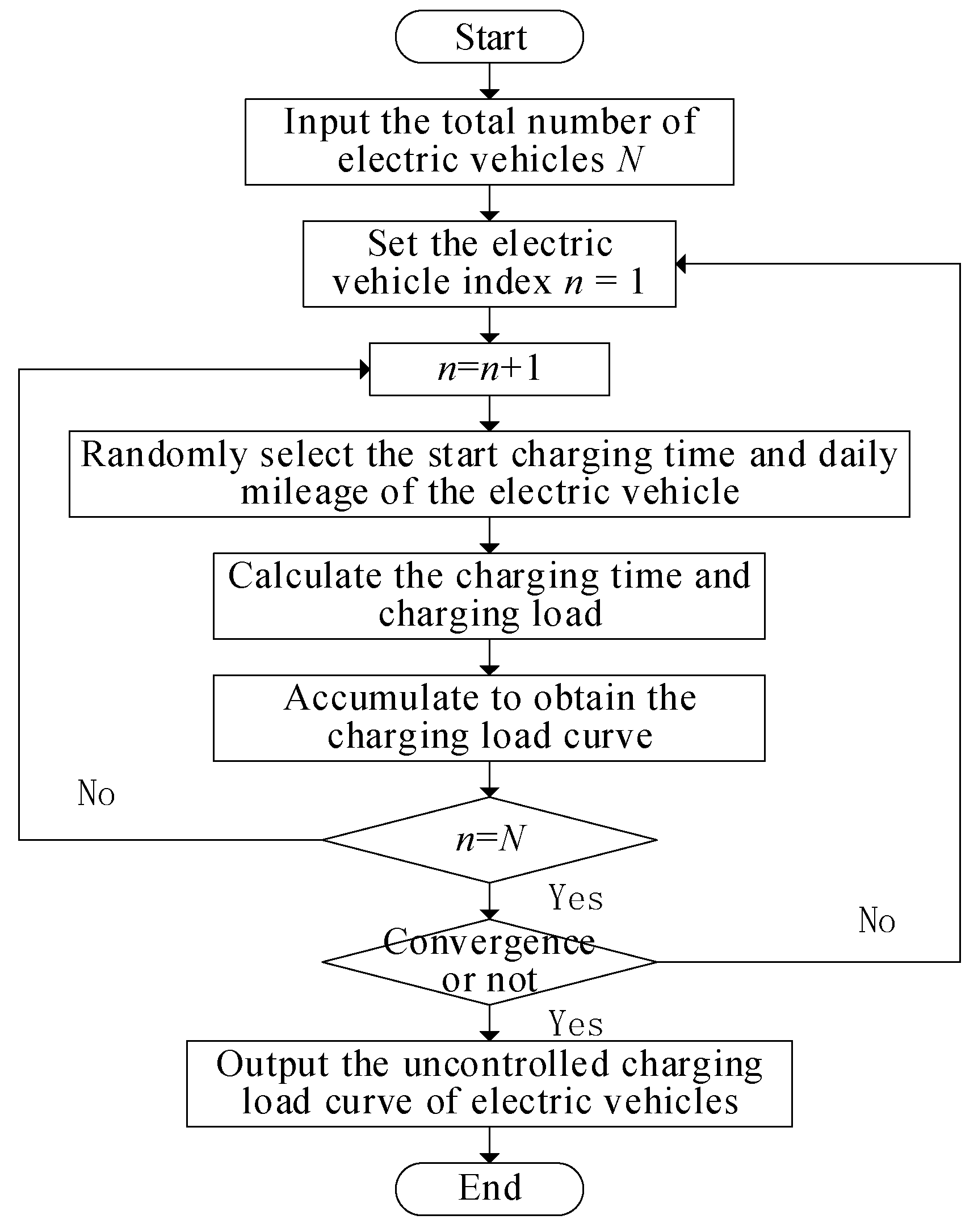
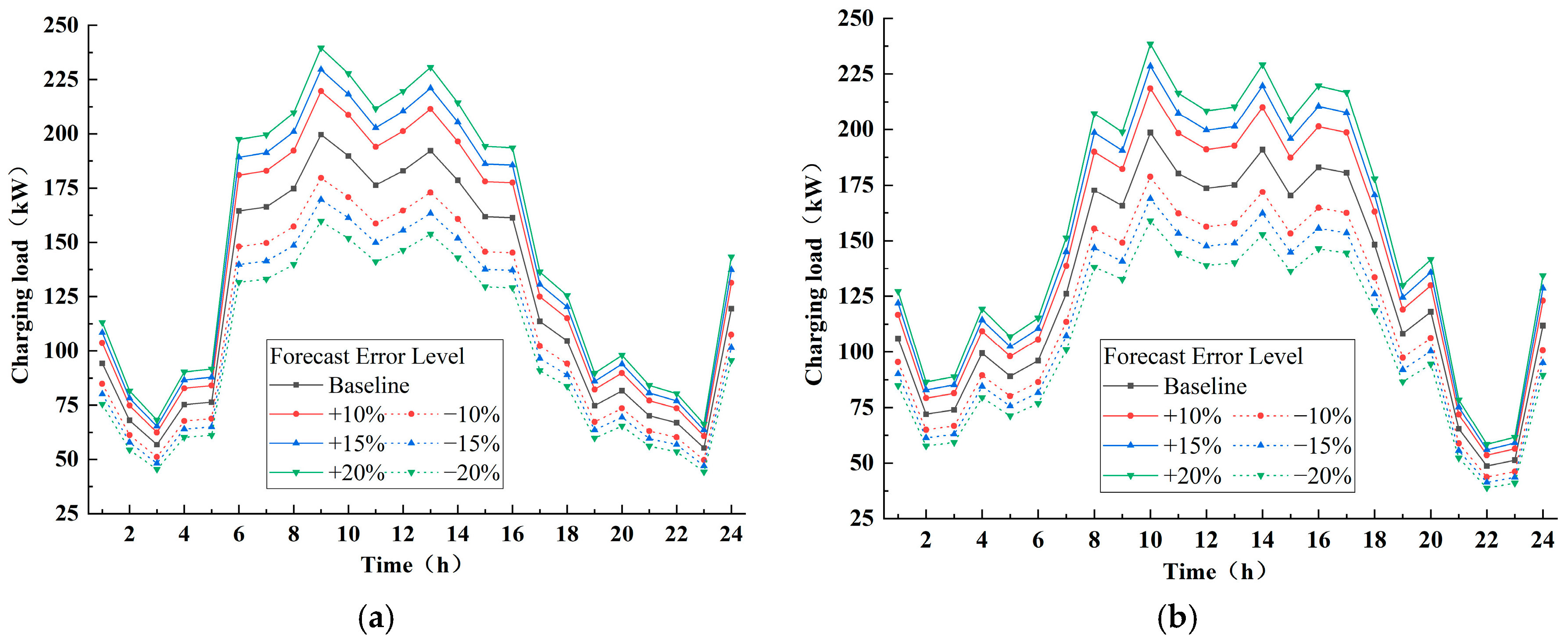
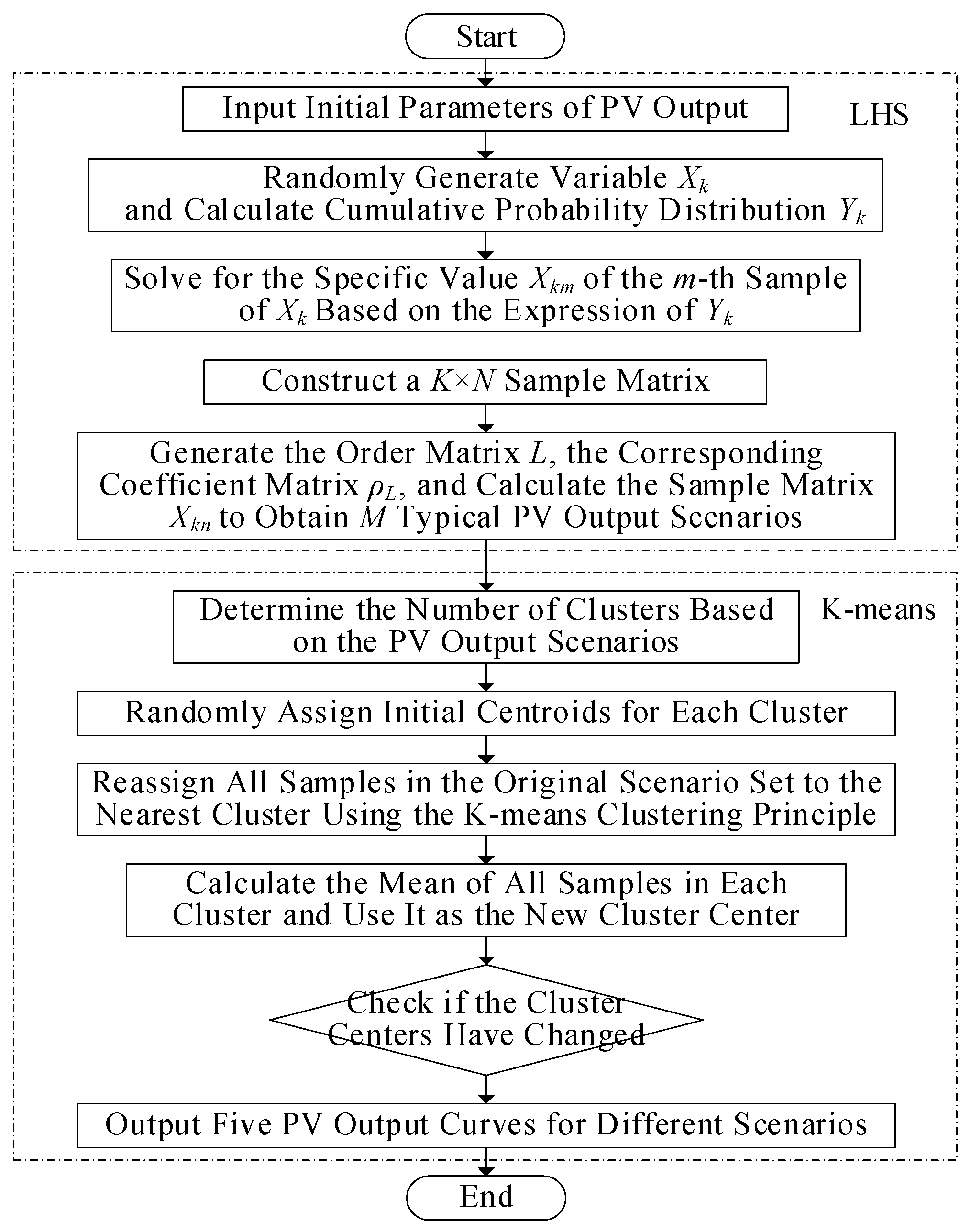
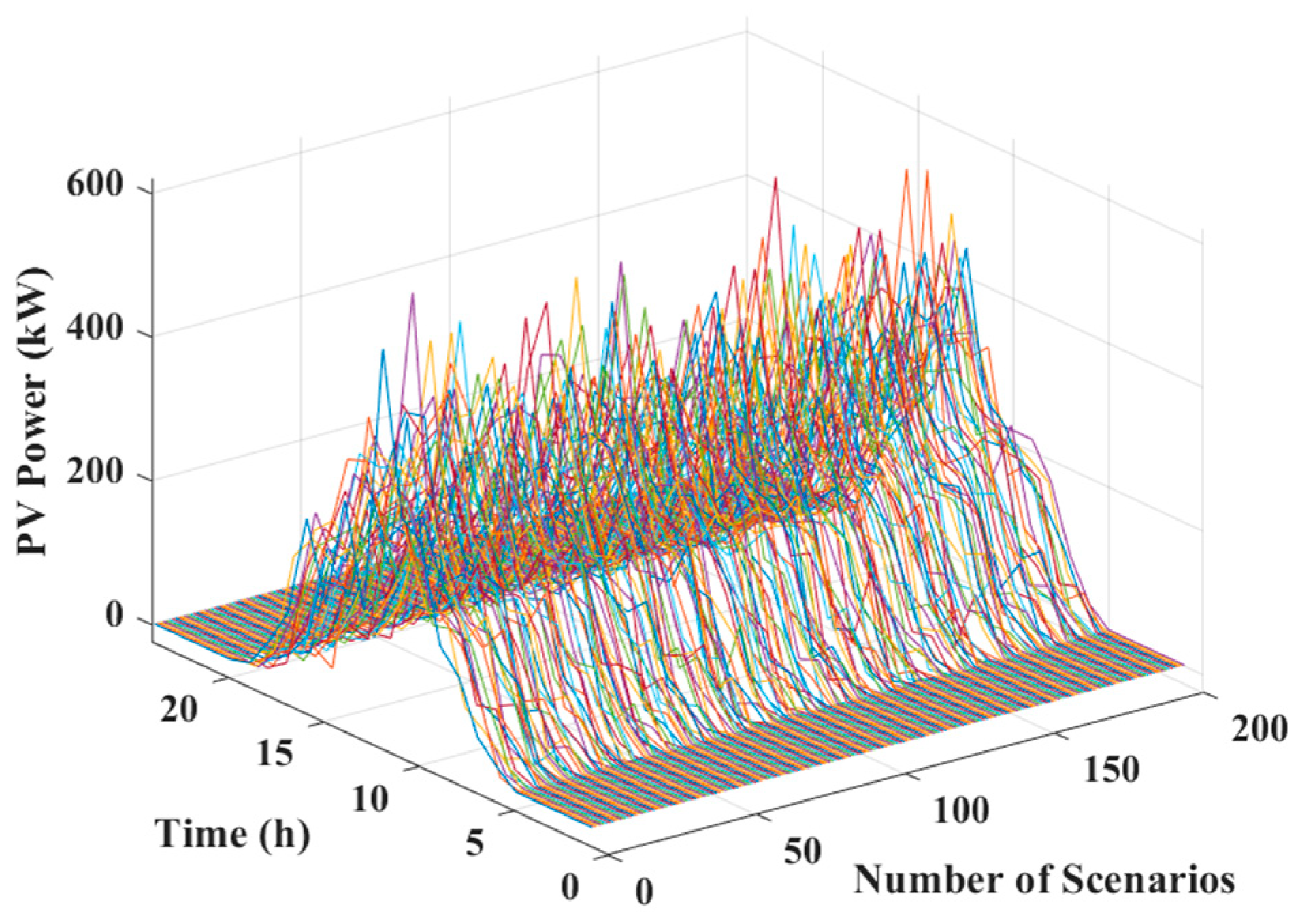
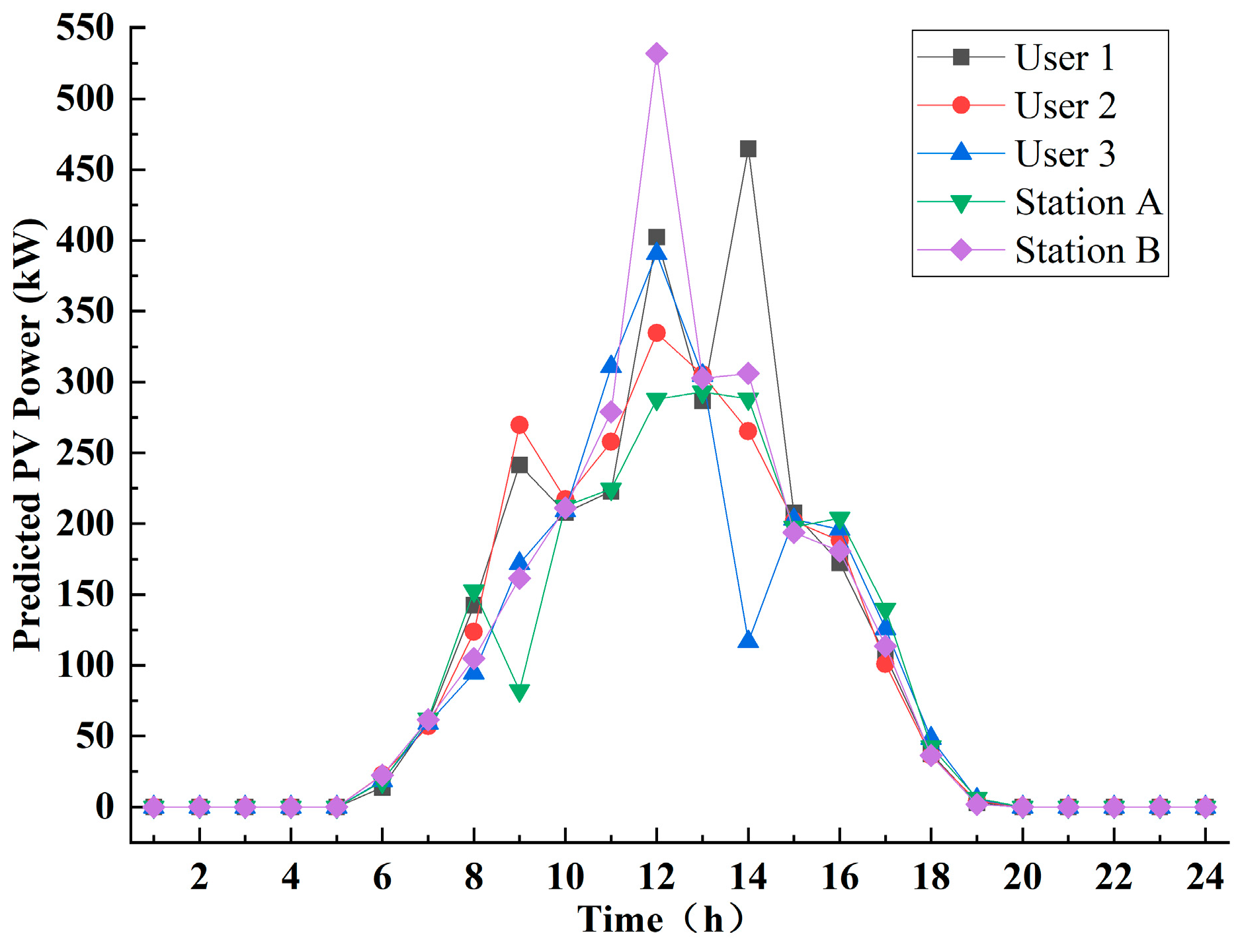
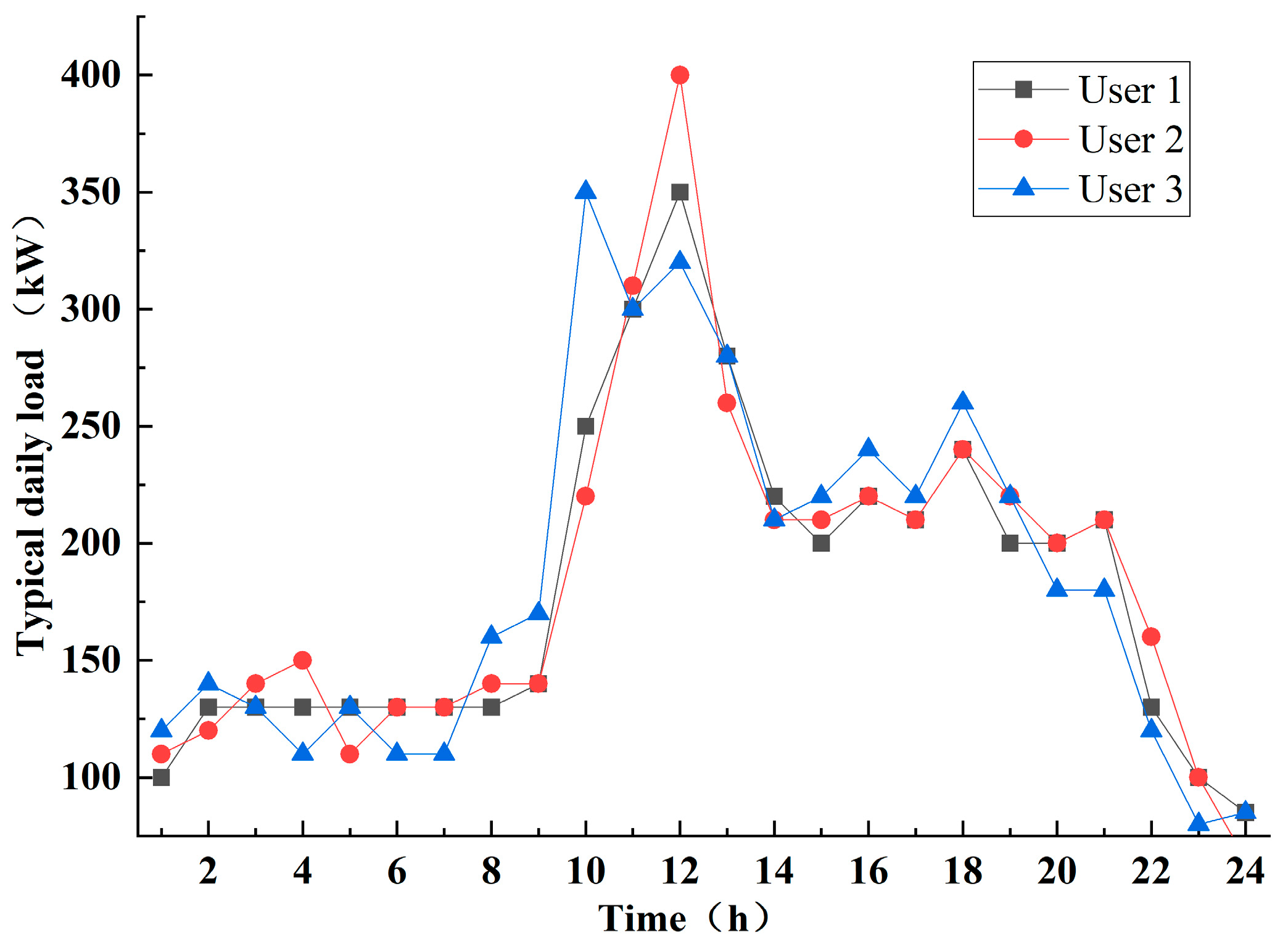
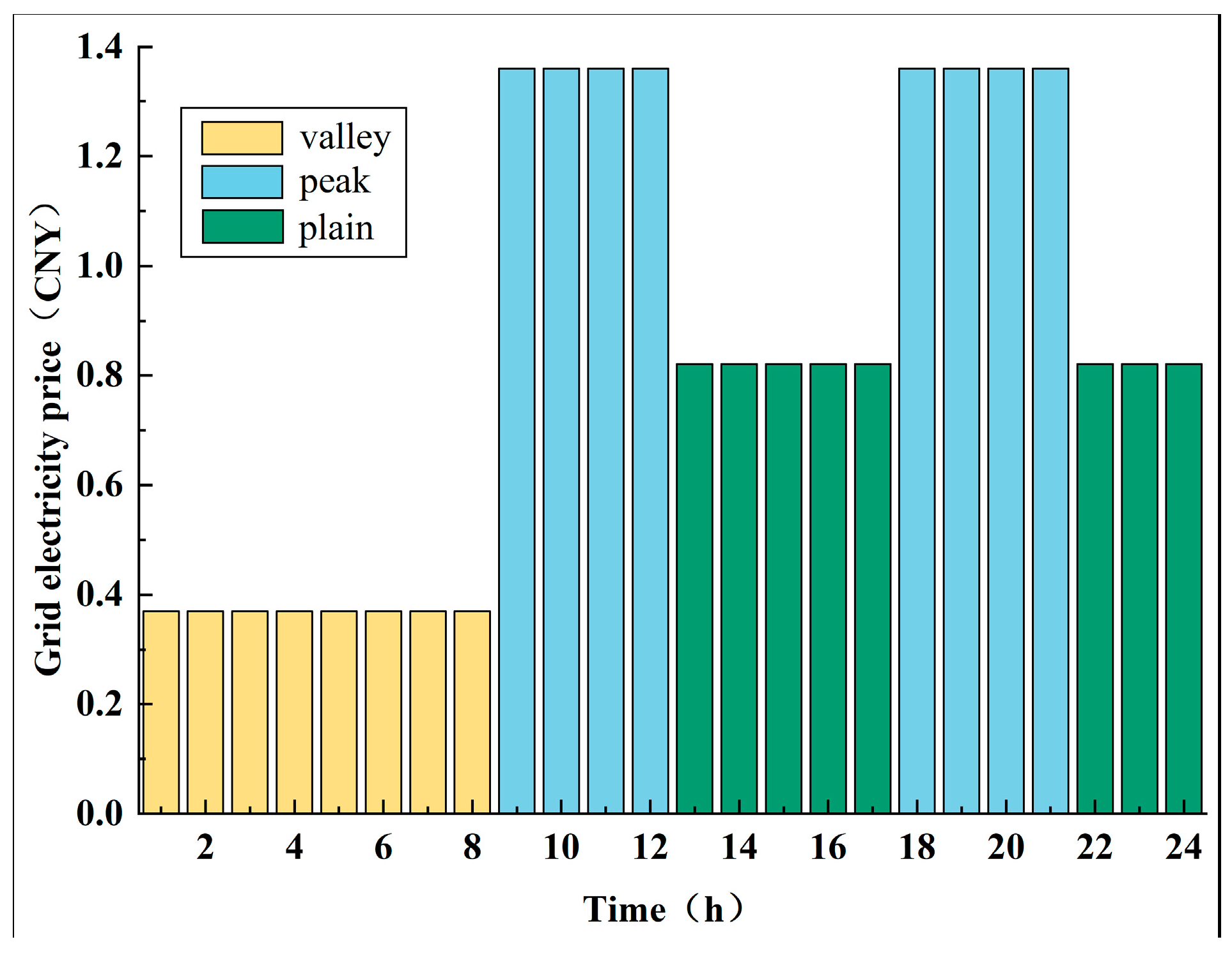
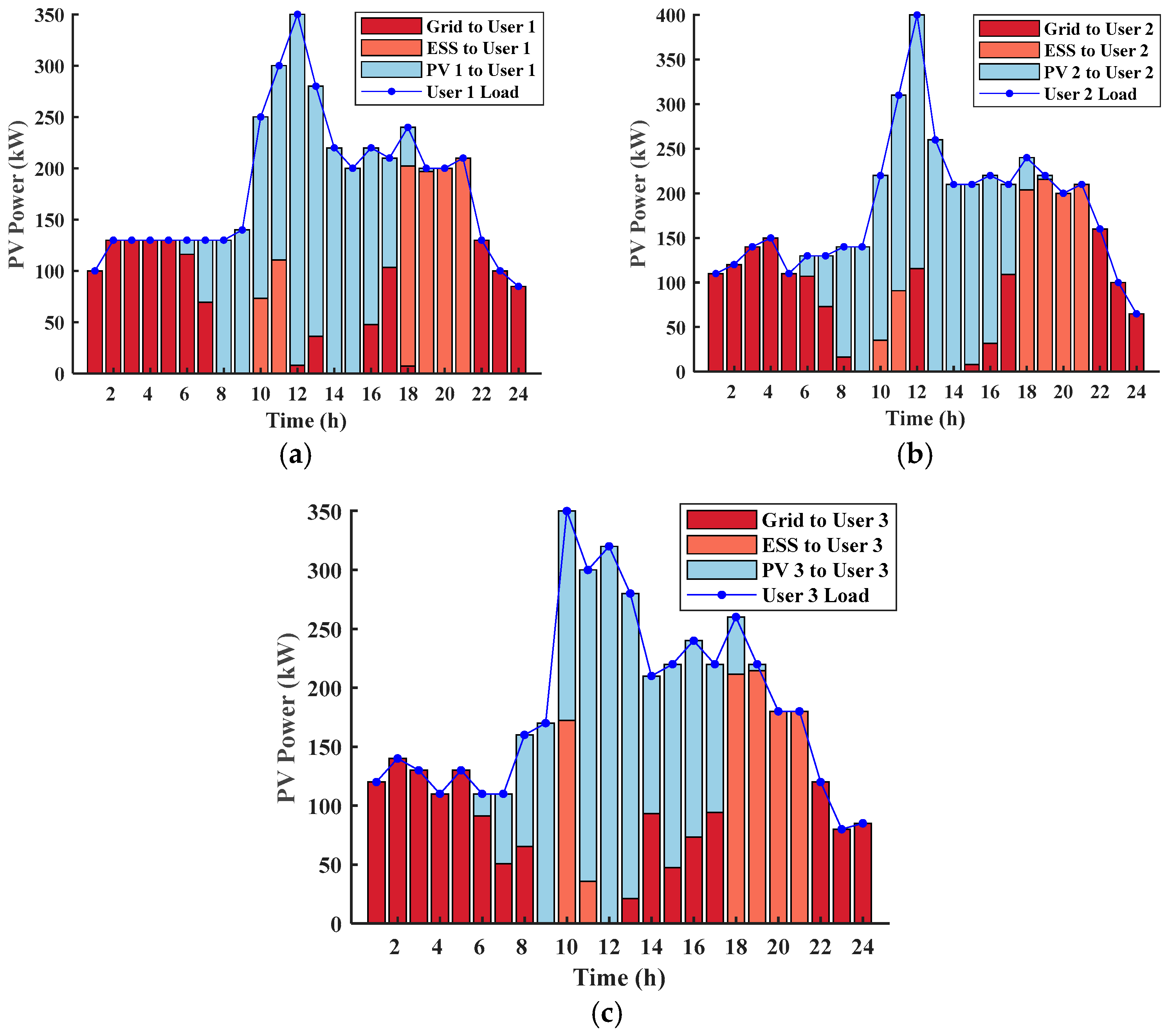
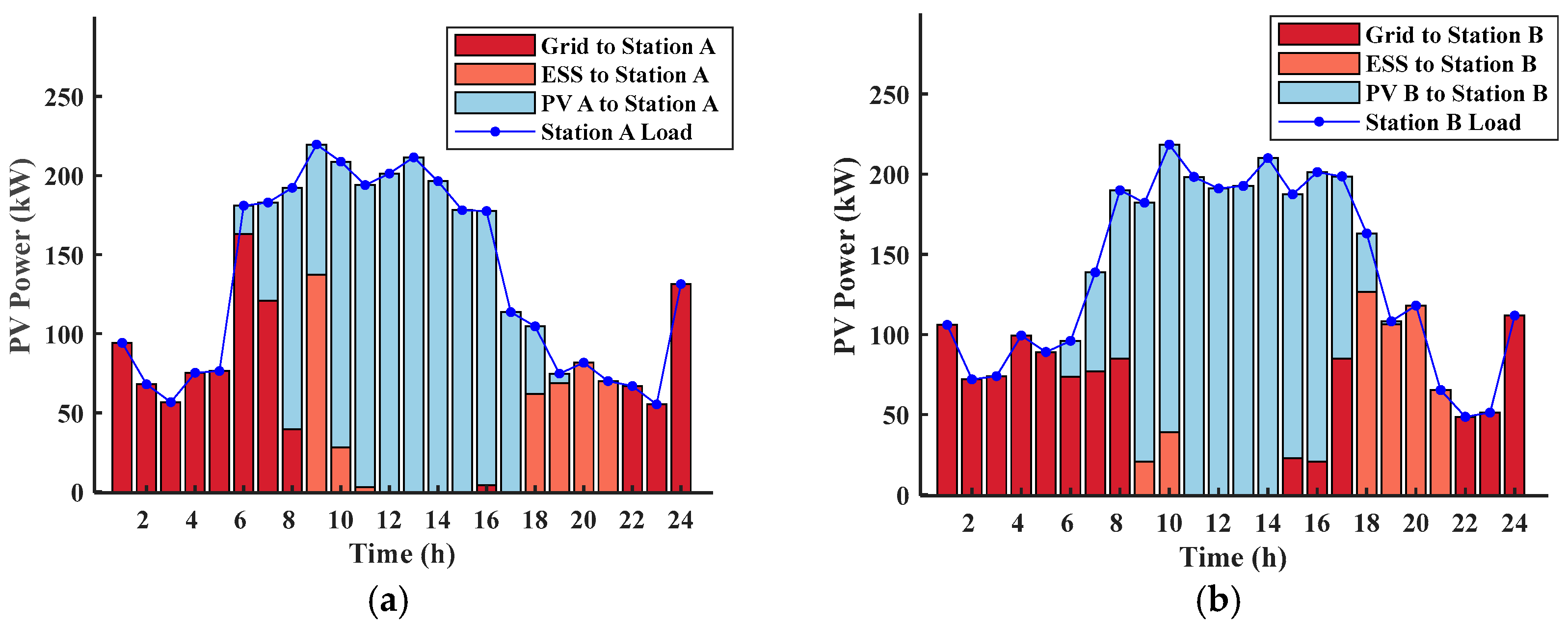

| Parameter | Values and Units | Parameter | Values and Units |
|---|---|---|---|
| cp | 60 CNY/kW | tr | 0.7% |
| ce | 1100 CNY/kWh | dr | 8% |
| c0 | 87 CNY/kW | γ | 0.3 |
| SOCmax | 0.9 | 0.5 | |
| SOCmin | 0.1 | cd | 0.02 CNY/kW |
| N | 10 years | 7.568 × 10−4 t CO2/kWh | |
| Dp | 350 days | 80.45 CNY/t CO2 |
| Uncertainty Value | Scenario 1 | Scenario 2 | ||||
|---|---|---|---|---|---|---|
| F/CNY | Em/kWh | C6/CNY | F/CNY | Em/kWh | C6/CNY | |
| 6495.8 | 4050 | / | 5880.4 | 4050 | 656.49 | |
| 7000.3 | 4050 | / | 6393.3 | 4050 | 637.36 | |
| 7433.1 | 4100 | / | 6830.7 | 4100 | 632.83 | |
| 7966.0 | 4200 | / | 7389.9 | 4200 | 602.40 | |
| Scenario | 1 | 2 | ||||||
|---|---|---|---|---|---|---|---|---|
| Uncertainty Value | /kWh | /kWh | /kWh | /kWh | /kWh | /kWh | /kWh | /kWh |
| 6763.6 | 2406.9 | 584.2 | 8936.8 | 5763.2 | 1054.3 | 934.9 | 9938.7 | |
| 6983.9 | 1655.6 | 667.5 | 8843.0 | 5881.2 | 641.3 | 579.1 | 9945.7 | |
| 7228.6 | 1209.3 | 827.3 | 8627.7 | 6160.8 | 195.0 | 773.7 | 9695.6 | |
| 7725.3 | 1069.6 | 894.2 | 8192.5 | 6662.6 | 193.1 | 708.0 | 9255.2 | |
| Scenario | 1 | 2 | ||||
|---|---|---|---|---|---|---|
| Prediction Error | F/CNY | Em/kWh | C6/CNY | F/CNY | Em/kWh | C6/CNY |
| 7433.1 | 4100 | / | 6830.7 | 4100 | 632.83 | |
| 7957.1 | 4100 | / | 7376.1 | 4100 | 611.39 | |
| 8480.1 | 4100 | / | 7931.7 | 4100 | 578.83 | |
| CNY/kWh | Scenario 1 | Scenario 2 | ||
|---|---|---|---|---|
| F/CNY | Em/kWh | F/CNY | Em/kWh | |
| 900 | 7128.5 | 4100 | 6526.1 | 4100 |
| 1000 | 7281.0 | 4100 | 6678.6 | 4100 |
| 1100 | 7433.1 | 4100 | 6830.7 | 4100 |
| 1200 | 7585.6 | 4100 | 6983.2 | 4100 |
| Scenario | /CNY | /t | /t | C6/CNY | C5/CNY | F/CNY |
|---|---|---|---|---|---|---|
| 1 | 5195.7 | 7.09 | 3.00 | / | 162.85 | 7433.1 |
| 2 | 5226.1 | 7.87 | 3.33 | 632.83 | 162.85 | 6830.7 |
Disclaimer/Publisher’s Note: The statements, opinions and data contained in all publications are solely those of the individual author(s) and contributor(s) and not of MDPI and/or the editor(s). MDPI and/or the editor(s) disclaim responsibility for any injury to people or property resulting from any ideas, methods, instructions or products referred to in the content. |
© 2025 by the authors. Licensee MDPI, Basel, Switzerland. This article is an open access article distributed under the terms and conditions of the Creative Commons Attribution (CC BY) license (https://creativecommons.org/licenses/by/4.0/).
Share and Cite
Jiang, S.; Li, J.; Shen, W.; Liang, L.; Wu, J. Optimal Allocation of Shared Energy Storage in Low-Carbon Parks Taking into Account the Uncertainty of Photovoltaic Output and Electric Vehicle Charging. Energies 2025, 18, 3280. https://doi.org/10.3390/en18133280
Jiang S, Li J, Shen W, Liang L, Wu J. Optimal Allocation of Shared Energy Storage in Low-Carbon Parks Taking into Account the Uncertainty of Photovoltaic Output and Electric Vehicle Charging. Energies. 2025; 18(13):3280. https://doi.org/10.3390/en18133280
Chicago/Turabian StyleJiang, Shang, Jiacheng Li, Wenlong Shen, Lu Liang, and Jinfeng Wu. 2025. "Optimal Allocation of Shared Energy Storage in Low-Carbon Parks Taking into Account the Uncertainty of Photovoltaic Output and Electric Vehicle Charging" Energies 18, no. 13: 3280. https://doi.org/10.3390/en18133280
APA StyleJiang, S., Li, J., Shen, W., Liang, L., & Wu, J. (2025). Optimal Allocation of Shared Energy Storage in Low-Carbon Parks Taking into Account the Uncertainty of Photovoltaic Output and Electric Vehicle Charging. Energies, 18(13), 3280. https://doi.org/10.3390/en18133280






